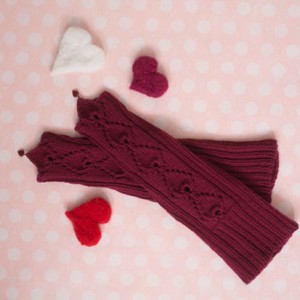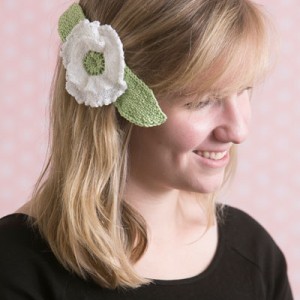Thread the long MC tail into a yarn needle. Hold the sides together so that the cozy is right-side out. Pass the needle under both strands of the first whole stitch across the gap and back down into the final bound-off stitch. Voila! The bind-off row looks completely continuous and the yarn is now on the outside of the work. (I use this technique to finish anything that should be round. I often use crochet slip stitch as the finishing touch on projects and the first and last stitches of that can be joined like this as well.)
 The next step is to take the needle under the head of the edge stitch on the left. This stitch is often distorted and the head may look vertical. If you look closely, though, you'll see that it is indeed the stitch. Cross the gap and go under the running thread between the first and second stitches on the right. Steps 3 & 4 repeat Steps 1 & 2, but from here on down the stitch heads will be obvious.
The next step is to take the needle under the head of the edge stitch on the left. This stitch is often distorted and the head may look vertical. If you look closely, though, you'll see that it is indeed the stitch. Cross the gap and go under the running thread between the first and second stitches on the right. Steps 3 & 4 repeat Steps 1 & 2, but from here on down the stitch heads will be obvious.For clarity, I kept the edges in the diagram apart but, of course, they will be coming together as you seam. Pull the yarn tightly enough that the rows look continuous but not so tightly that the seam shortens. (This is a bit of a balancing act.)
When all the rows are joined, turn the cozy upside down. The threaded needle will be on the left of the gap. Take it under the outer strand of the nearest cast-on chain. Cross the gap and take the needle from outside to inside under both strands of a chain stitch. (If the first stitch is not obvious, use the second stitch.) Cross the gap again and take the needle down into the stitch with the one strand coming out of it. This makes the cast-on look continuous and puts the tail on the inside where it can be secured and darned in. Secure and darn in the remaining tails, turn the cozy right-side out, and enjoy!
Until next time . . .




















